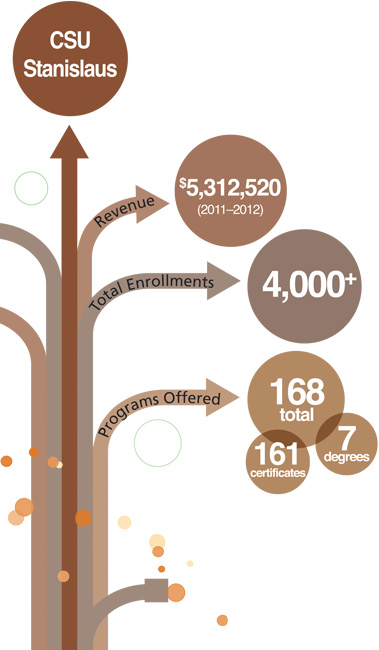
Model 5
All Hands on Deck: Confronting a Regional Challenge with Rapid Response and Long-Term Vision
Context and Challenges: By the fall of 2010, the unemployment rate in Stockton reached nearly 19%. Just south in Stanislaus county, home to CSU Stanislaus, the poverty rate exceeded 23%. In November 2012, as this is being written, the unemployment rate in the region remains at 13.6%. The Central Valley is primarily an agricultural region with many residents sharing a long history of farm-related employment or jobs with businesses that depended on a robust agricultural economy (restaurants, equipment sales, etc.). The region is struggling to find a near-term path to employment for the unemployed and a longer-term path to a more diversified economy. The areas showing the best signs of employment growth now are the health fields, education to some extent, and trade/transportation. CSU Stanislaus, with its main campus in Turlock and a regional center in Stockton, is the only public university serving the region. As the region faced a crisis, Stanislaus looked for a way to respond.
The All-Capacities Strategy: Considering the regional economic crisis to be a call to action, Stanislaus took a fresh look at the full range of campus capabilities. By means of its self-support capacity, its state-funded options, its faculty research expertise, the talents of its students (service learning and volunteering), its network of relationships in the Stockton region, and its role there as an influential convener and collaboration builder, Stanislaus developed effective educational and economic strategies. For the near term, it brought together the region’s leadership and its own capacities to prepare the unemployed for new employment options. For the longer term, it drew on the same resources to foster greater economic diversity and thus to make the region more resilient in the face of a changing global economy. The resulting initiatives are making a positive impact in the region.







